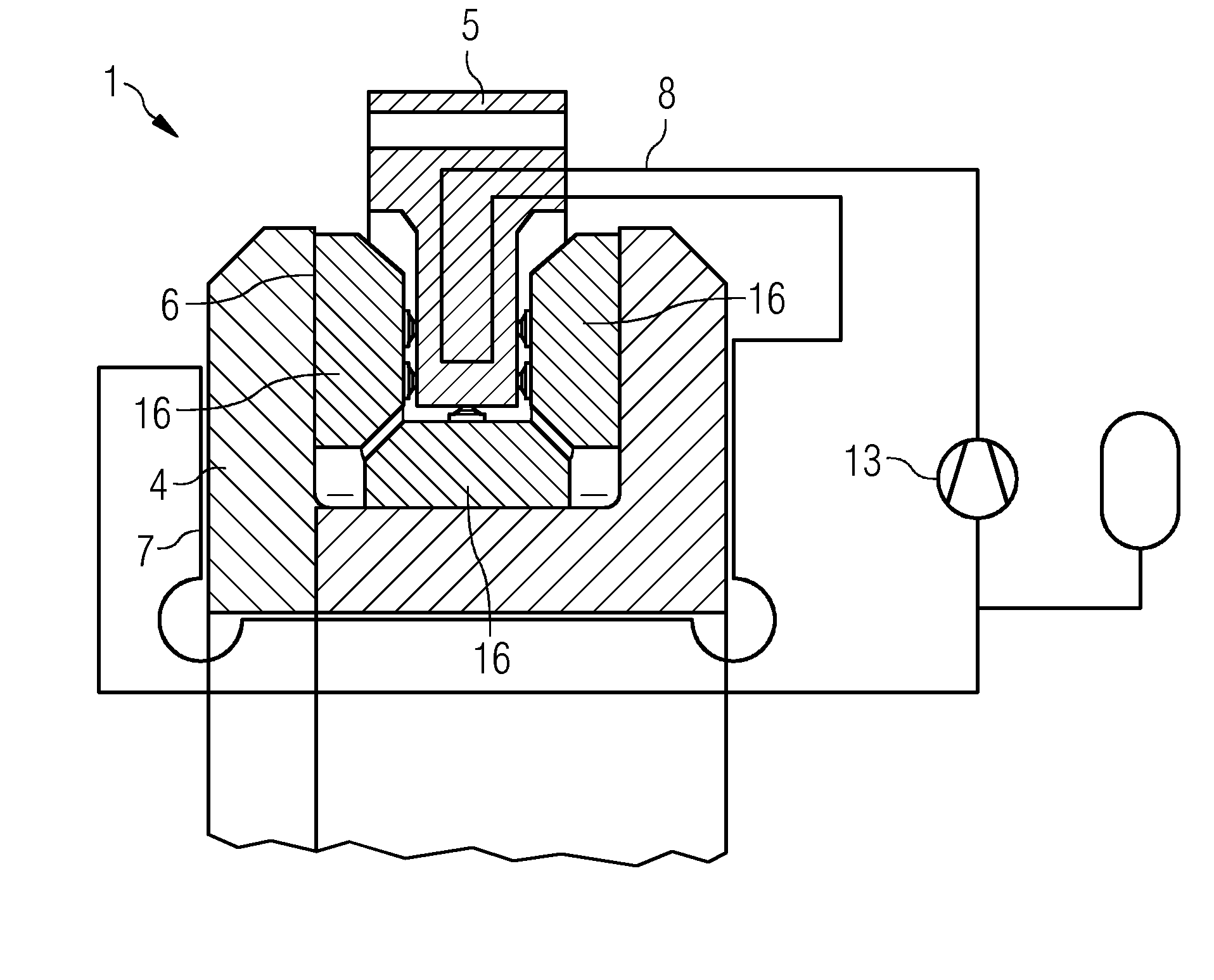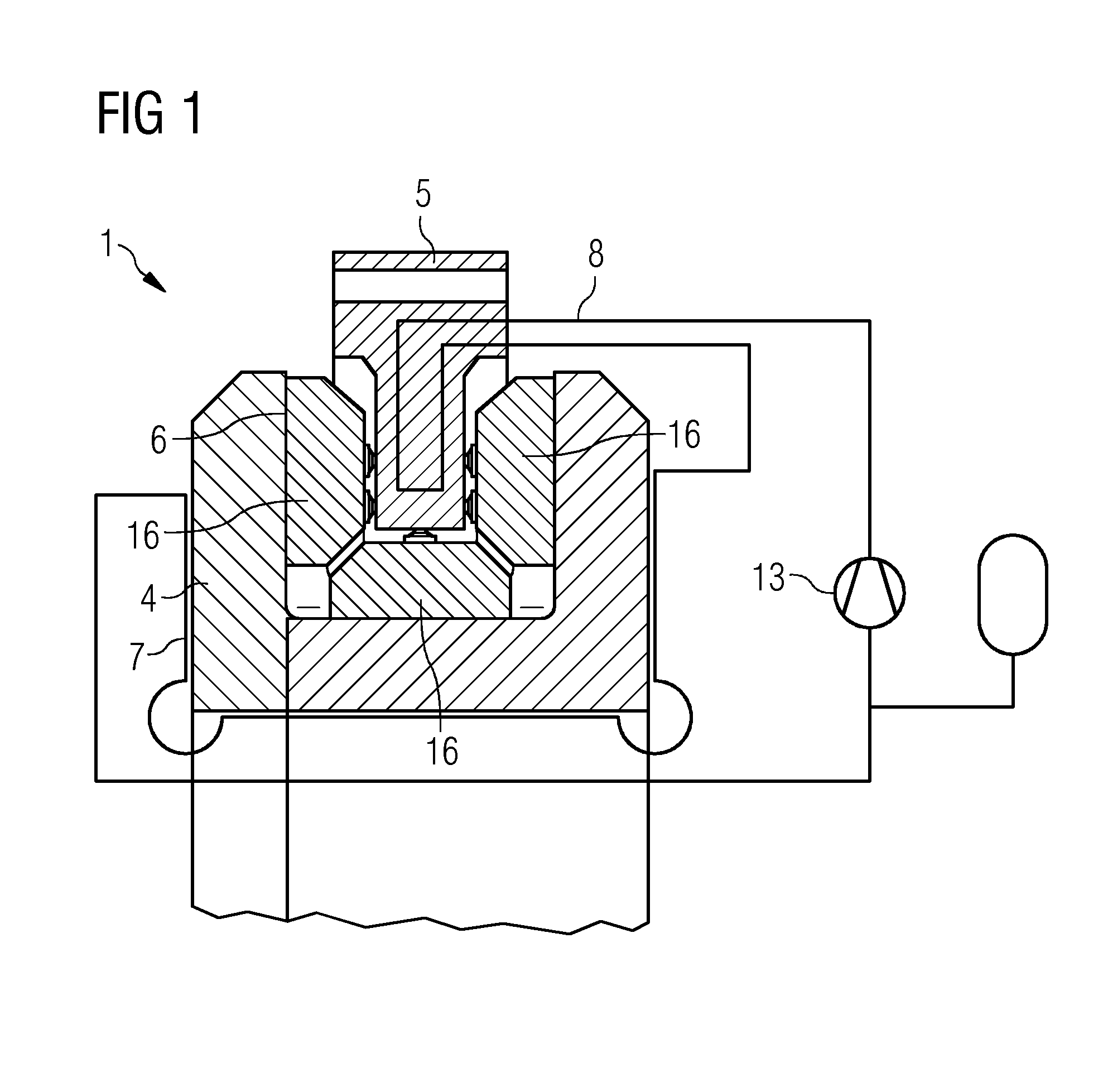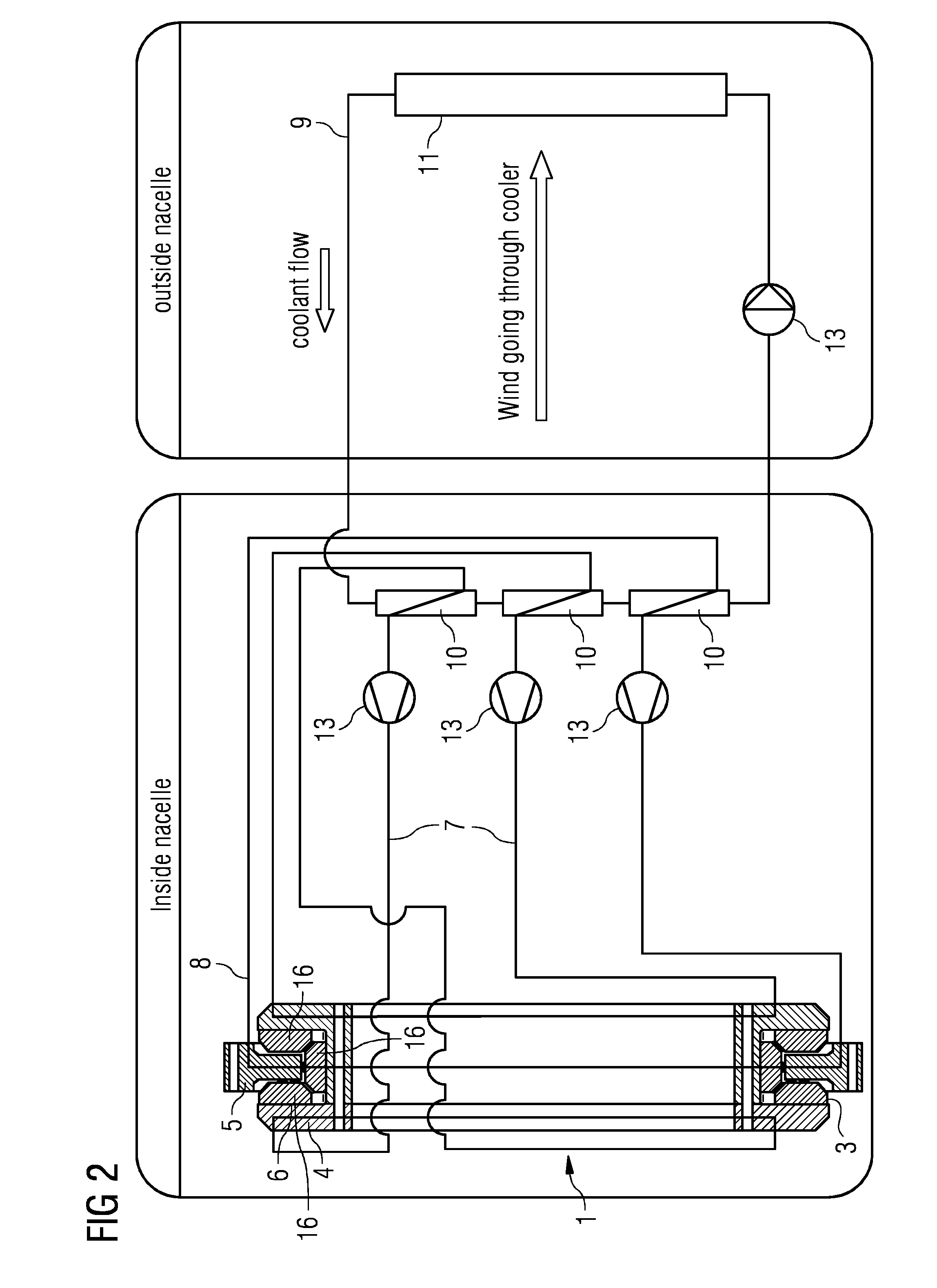Arrangement to control the clearance of a sliding bearing
a technology of sliding bearing and clearance, which is applied in the direction of hydrostatic bearings, bearing cooling, machines/engines, etc., can solve the problems of insufficient thickness of lubricating layer, damage to the electrical generator of wind turbines, and insufficient rolling element bearings, etc., and achieve the effect of reducing the amount of heat los
- Summary
- Abstract
- Description
- Claims
- Application Information
AI Technical Summary
Benefits of technology
Problems solved by technology
Method used
Image
Examples
first embodiment
[0128]FIG. 1 shows a schematic view of the bearing arrangement.
[0129]FIG. 1 shows a bearing arrangement 1 comprising a bearing. The bearing comprises a first bearing shell 4 and a second bearing shell 5. Bearing pads 16 are attached to the second bearing shell 5. During operation of the bearing the bearing pads 16 slide along to the surface of the first bearing shell 4.
[0130]A certain clearance 6 is provided between the first bearing shell 4 and the second bearing shell 5. The clearance 6 has to be kept within a certain range, to avoid damages at the bearing or the wind turbine, for example.
[0131]A first circuit 7 is arranged at the first bearing shell 4. The first circuit 7 comprises a first fluid. The first circuit 7 is in thermal contact to the first bearing shell 4, so that thermal energy, heat for example, is transferred between the first bearing shell 4 and the first fluid. Thus the first bearing shell 4 is cooled or heated by the first fluid.
[0132]A second circuit 8 is arrang...
second embodiment
[0138]FIG. 2 shows the bearing arrangement.
[0139]FIG. 2 shows a bearing arrangement 1 with a bearing 3. The bearing 3 comprises a first bearing shell 4 and a second bearing shell 5. Bearing pads 16 are arranged between the first bearing shell 4 and the second bearing shell 5.
[0140]A first circuit 7 is arranged at the first bearing shell 4 to cool or heat the first bearing shell 4. In this embodiment the first circuit 7 is arranged in two loops along the first bearing shell 4.
[0141]A second circuit 8 is arranged at the second bearing shell 5, to cool or heat the second bearing shell 5.
[0142]The first circuit 7 and the second circuit 8 are connected via a heat exchanger 10.
[0143]The heat exchanger 10 is connected to a third circuit 9. The third circuit 9 comprises a third fluid. A pump 13 pumps the third fluid within the third circuit 9.
[0144]The first circuit 7 and the second circuit 8 are connected via the third circuit 9. Thus a difference in the temperature of the first fluid and ...
PUM
 Login to View More
Login to View More Abstract
Description
Claims
Application Information
 Login to View More
Login to View More - R&D
- Intellectual Property
- Life Sciences
- Materials
- Tech Scout
- Unparalleled Data Quality
- Higher Quality Content
- 60% Fewer Hallucinations
Browse by: Latest US Patents, China's latest patents, Technical Efficacy Thesaurus, Application Domain, Technology Topic, Popular Technical Reports.
© 2025 PatSnap. All rights reserved.Legal|Privacy policy|Modern Slavery Act Transparency Statement|Sitemap|About US| Contact US: help@patsnap.com



